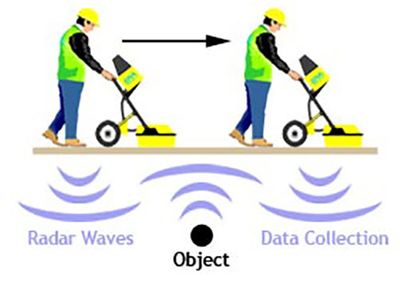How GPR Works
Understanding Ground Penetrating Radar (GPR) Technology

How GPR Works: A Comprehensive Guide
Ground Penetrating Radar (GPR) operates on the principle of transmission, reflection, and detection of short-duration electromagnetic pulses. These pulses are emitted from a transducer that is moved across the surface being examined. The energy from these pulses travels through the concrete and is reflected back to the receiving antenna whenever it encounters subsurface discontinuities, such as voids, metallic and non-metallic structures, or geological strata.
The time it takes for the electromagnetic pulse to travel from the transmitting antenna to the target and back to the receiving antenna is continuously recorded. This real-time data is displayed on a computer, allowing for immediate on-site interpretation or digital processing to create detailed plan-view maps, cross-sectional images, and three-dimensional models. This capability makes GPR a versatile and invaluable tool for applications in construction, geological surveying, and infrastructure maintenance.
At Terraprobe, we leverage the latest GPR technology to deliver precise and reliable subsurface imaging. Our expertise ensures that any hidden structures or potential issues are accurately identified, providing essential information for successful project planning and execution. Whether you need to locate utilities, assess structural integrity, or conduct geological surveys, our GPR services offer unmatched clarity and detail.
